#esoteric judaism
Text
How Masculine & Feminine Shaped Religion
Polarity is an ancient teaching. Humankind has seen the vibration behind the existence we experience for a very long time. Yet, our spiritual understanding has still been tripped up by how. Join me in unlocking the mystery...
While hellenization was happening-
FUN FACT: all of the collective knowledge we appreciate today comes from a very blended, and multicultural background. Scribes and priests, Holy people and ordinary folks from every culture imaginable have risked life and limb to carry our most sacred knowledge to safety from invasions and fires to the best of their ability. Some of the pillagers would flay…
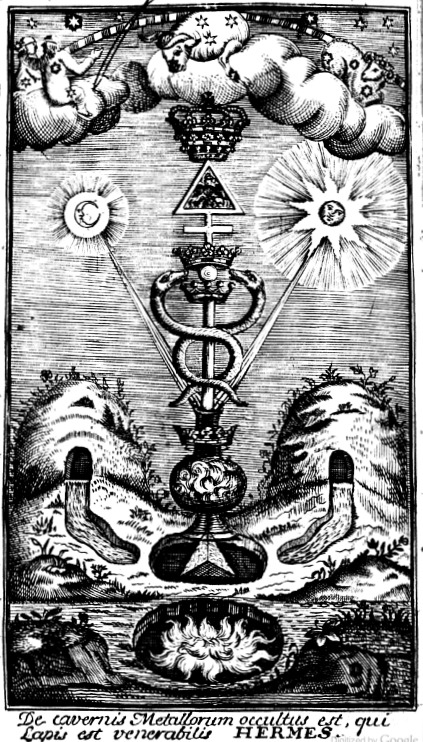
View On WordPress
#alchemy#binah#chokhmah#christianity#esoteric#esoteric christianity#essene#how#inner wisdom#judaism#kabbalah#Kemet#koine#mysticism#philosophy#polarity#royal mysteries#ruach hakodesh#sophia#spirituality#wisdom#wisdom tradition
103 notes
·
View notes
Text
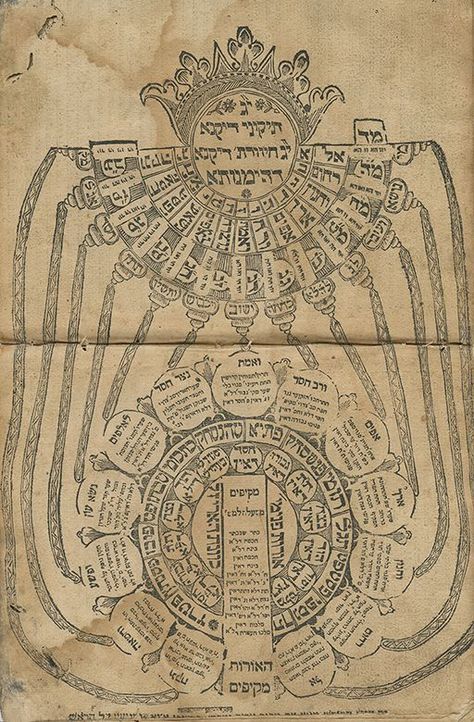
from: https://www.kedem-auctions.com/sites/default/files/Sale46/128.jpg
95 notes
·
View notes
Text
"The Kabbalists note that the 32 paths of Wisdom have their parallel in the human nervous system. Thirty-one of these paths then parallel the 31 nerves that emanate from the spinal cord. The thirty-second and highest path corresponds to the entire complex of cranial nerves, which are twelve in number. The nervous system serves a double purpose. First, it transmits messages from the brain to all parts of the body, allowing the mind to control the limbs and organs. Secondly, the nervous system transmits information from the various senses to the brain. Four of the senses, sight, hearing, taste and smell, come directly through the cranial nerves, which are entirely in thebrain. The impulses that come from the lower 31 nerves deal primarily with the sense of touch and feeling. Like the nerves, each of the 32 paths is a two way street. First it is the channel through which the Mind exerts control over creation. Secondly, however, it is also the path through which man can reach the Mind. If an individual wishes to attain a mystical experience and approach the Mind, he must travel along the 32 paths. In Hebrew, the number 32 is written Lamed Bet (). This spells Lev, the Hebrew word for heart. It is in the heart that the action of the Mind is manifest in the body. As soon as the influence of the mind ceases, the heart ceases to function, this being the definition of death. The heart also provides lifeforce to the brain and nervous system. When the heart stops pumping, the nervous system can no longer function, and the mind no longer exerts influence on the body. The heart therefore serves as a causal link between mind and body. It is for this reason that Sefer Yetzirah calls the heart “the king over the soul” (6:3). It also describes the mystical experience as a “running of the heart” (1:8). The Torah is seen as the heart of creation. The first letter of the Torah is theBet () of Bereshit ()—“In the beginning.” The last letter of the Torah is the Lamed () of Yisrael ()—“Israel.” Together, these two letters also spell out Lev (), meaning heart. The 32 paths are contained in the Torah, which is the means through which the Mind is revealed. It is also the link between the Mind and the physical universe. The Torah is therefore expounded in 32 different ways, as taught by Rabbi Yosi of Galili." - Aryeh Kaplan

3 notes
·
View notes
Text

~This Symbol Originally Didn’t Have Anything To Do With The Illuminati Or Secret Societies~
It actually has to do with the Jewish messiah and/or Jesus as the Christian messiah. The missing part of the pyramid is called the “Chief Cornerstone”. Jesus is referred to as the “Chief Cornerstone” of the church”. In the Old Testament, it mentions “the messiah” once or twice. It refers to the messiah as being the “chief cornerstone”…and the actual word “chief cornerstone” means “triangle on top of the pyramid” in ancient Hebrew and in many forms of Aramaic.
Ephesians 2:20-22: “We are built upon the FOUNDATION OF THE APOSTLES AND PROPHETS, Jesus Christ Himself being the CHIEF CORNER-STONE; In whom all the building fitly framed together grows unto a HOLY TEMPLE in the Lord: In whom we also are built together for an HABITATION OF GOD through the Spirit.”

Only the pyramid can represent God manifested in the saints of all Ages, the New Jerusalem. No other architectural form has a “chief corner stone” which is reproduced by the building it completes as the Bride reproduces Christ. “All God was He poured into Christ, and all Christ was He poured into His Church” (John 17:20-23). Being five-sided, it has no place in the building but as the chief corner-stone or Capstone to whose angles the whole building is fitly joined together…
#jesus#pyramid#egypt#occult#esoteric#cheif cornerstone#church#bible#illuminati#triangle#messiah#hebrew#judaism#god
64 notes
·
View notes
Text
The Place of Christianity in the Shadow of the Ancient Wisdom-Religion
“To connect the Mosaic Religion with the Mysteries is to wrest from the Church its position, and to show that the Old Testament is the result of human effort…” (Samuel F. Dunlap. 1860. Sōd: The Mysteries of Adonai, pg. iii)
“The work of the Old Testament is the first offshoot from the Mysteries; the New Testament is the second. The Old Testament is the Reformed Judaeo-Phoenician or Rabbinical…
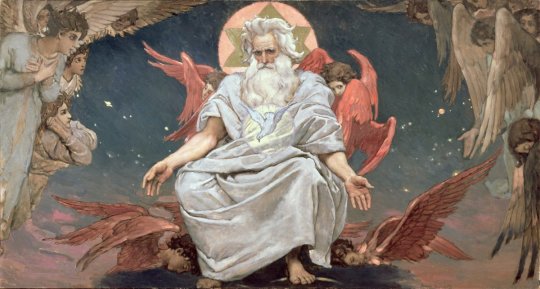
View On WordPress
0 notes
Text
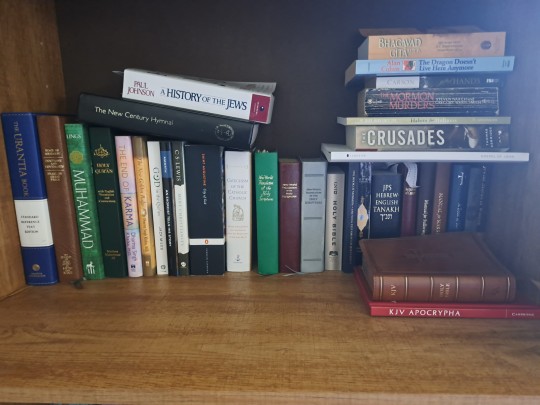
0 notes
Text
Watch "ESOTERICA" on YouTube
Awesome youtube channel.
#mythology#judaism#christianity#egiptian mythology#greek mythology#roman mythology#magick#alchemy#youtube#jewish mysticism#christian mythology#esoteric#esoterism#blacksmithing#egyptian#greece#rome#ancient rome#history#old world#the bible#thelema#jesus#yahweh#yhvh#paganism#gnosticism#philosophy#religion#ancient religion
1 note
·
View note
Photo

Abulafia speaking the names of God #Abulafia #Sefirot #OpenAI #Dalle2 #kabbalah #EcstaticKabbalah #Sephiroth #Judaism #Platonism #Magick #Esoteric https://www.instagram.com/p/ContPmYPt3j/?igshid=NGJjMDIxMWI=
#abulafia#sefirot#openai#dalle2#kabbalah#ecstatickabbalah#sephiroth#judaism#platonism#magick#esoteric
1 note
·
View note
Note
what are the basics of esoteric judaism?
Esotericism isn't just one thing, it's a type of theology. Judaism has thousands of years of history, and several mystical and esoteric traditions. Kabbalah, Merkhava, Hekhalot, etc, all with their own conventions and nuances.
473 notes
·
View notes
Text
Jewish Angel Work
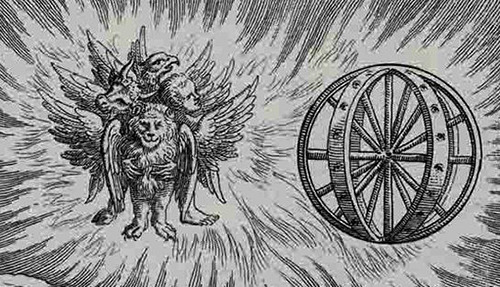
I don't see a bunch of writing about angel work in general, and what I do find is often heavily Christianized! I wanted to talk about what angel work can look like from a Jewish perspective.
(Gentiles may interact and enjoy, but understand that this is for educational purposes and not an invitation to appropriate! 🤍)
A Jewish-Specific Perspective
Judaism views angels in ways other traditions may not share! Some examples:
Angels aren't former humans. They are their own distinct beings just like demons, cows, land spirits and butterflies. People who pass away, even children, are not considered "angels returning home." These angels have specific forms and looks depending on the type, some more humanoid than others.
Angels don't have free will. This does not mean they are held hostage or can't have their own personalities, but their will is an extension of HaShem's Will, serving a specific role in making that Will manifest. Kind of like employees in a corporation doing their tasks!
They don't have names. Or at least, they don't have names we're supposed to know or ask for. They may be incomprehensible to humans, or maintaining a level of anonymity as to not distract from HaShem. Either way, asking for a name is often discouraged in traditional texts.
They AREN'T all here to help you. While it all serves a Divine Will and is therefore Good in the grand scheme of things, many angels serve completely neutral functions from a human perspective. Some could even be considered harmful to humans, the most prominent example being HaSatan. (Even still, HaSatan isn't seen as a true villain. He's just doing his job.)
Some of them are ONLY here to help you! Historical Rabbis were big on the concept of guardian angels. The Talmud says "Every blade of grass has its Angel that bends over it and whispers, 'Grow, grow.'" (Midrash Rabba, Bereshit 10:6.) Every living creature, including you, has a guardian angel to help you along your path. Some translations say the angels hit the grass, and that's not the only story of angels smacking things, so that guidance isn't always gentle, but it's always in the right direction.
Types of Angel Work
Spirit guides. Like mentioned above, guardian angels can help encourage you to "Grow! Grow!" and keep you on a path in line with spiritual health and lovingkindness.
Communing with HaShem. Gd is extremely esoteric. Angels help us send and recieve messages in an easier-to-conceptualize way! Meditation and prayer can also play into this. Beyond every-day applications, angels can also appear unexpectedly with important messages.
Communicating with other spirits. As angels are often messengers, I also think it's helpful to call upon their aid when working with other spirits!
Working with angels of various functions. Modern day Rabbis often marry angelic theology with scientific phenomena, with angels overseeing the process. By that extent, we could ask those angels for help/guidance when relevant!
Protection. Psalm 91, often recited for protection, depicts HaShem commanding angels on your behalf to guard you in all ways. One bedtime prayer names the four archangels to surround us.
Shalom Aleichem is traditionally sung on Friday nights before Shabbat dinner. It invites angels of peace to basically come and hang out with us during shabbat, then to leave in peace once shabbat is over. Many arrangements also make a good lullaby.
Other Notes
Metatron (מֶטָטְרוֹן) is a specifically-Jewish angel who gets appropriated a lot in spiritual circles. He does not appear in the Tanakh, but is mentioned in the Talmud and largely fleshed out in kabbalistic literature! (Islamic literature does mention him by different name, ميططرون, Mitatrun/Mitatrush. Solidarity.)Lots of people recognize Lilith as closed, but the same attention hasn't been given to Metatron. He's a very complex and ambiguous figure worth a whole post of his own so I won't get into it here!
This post is by no means comprehensive! This is just a very "quick" overview of a very rich field of study.
Further Study
On My Right Michael, On My Left Gabriel: Angels in Ancient Jewish Culture-- Mika Ahuvia
A Gathering of Angels: Angels in Jewish Life and Literature-- Morris B. Margolies
Ascending Jacob's Ladder: Jewish Views of Angels, Demons, and Evil Spirits-- Ronald H. Isaacs
2K notes
·
View notes
Text

MISHQAD- A FORM OF SINGLE POINTED CONCENTRATION
“My soul is very sorrowful, even to death. Remain here and watch.” (Mark 14:34)
Watch: Hebrew shaqad (שָׁקַד)- “to be circumspect,” or “carefully consider” as in observant. “to keep watch” or “be mindful.”
Remember, this particular verse is in the garden narrative. It’s that same mountain scene Yeshua’ initiates had been several times before. He would’ve been practicing a deep form of Merkhabah and ascending to the Throne Room to speak with Abba directly. His insistence to enter into shaqad would imply they “keep a spiritual vigil and be present in the moment.”
Sadly, the specific methods have been lost to us. We don’t know if they used a silent prayer or a mantra. It might be a niggunim- a spiritual intonation, or hymn still practiced in Judaism today. The truth is we don’t know anymore. At some point the exact methods of Yeshua’ merkhabah became lost as the Jewish mystics stepped back while Greek gentiles emerged.
Hekhalot and merkhabah- ascent through the ten heavens via intense meditation slowly shifted into what we call Kabbalah today. However, all of that took place far away from the newly Romanized Christian Faith. We have vague mention in some of the Dead Sea Codices but even the Rabbis I’ve spoken with are leery of putting too fine a point on specific methods used by Yeshua and his inner circle. (all we know for certain is methods existed in Palestine back then)
There are quite a few really good works from the second Temple period that reveal these practices but we can’t say with any certainty they belonged to Yeshua. In modern times, the Hasidic movement saw a huge revival in merkhabah practices but they differ wildly from anything todays Christian’s would recognize.
So, observe your thoughts. Be watchful. That may be as close as we come to knowing the way.
#shaqad#mindfulness#inner transformation#mysticism#yeshua#spirituality#wisdom#merkabah#esoteric christianity#christianity#meditation#christian mysteries#esoteric wisdom#hekhalot#inner wisdom#esoteric#inner peace#jewish mysticism#second temple judaism#niggunim#mishqad
4 notes
·
View notes
Text
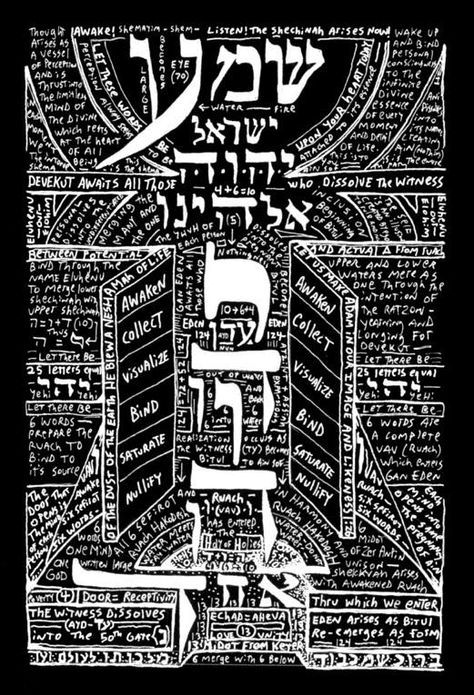
from: https://www.davidchaimsmith.com/drawings
#david chaim smith#judaism#jewish#jewishart#black and white#jewish manuscript#kabbalah#esoteric#spiritual#religion#religious art#religious
25 notes
·
View notes
Text
"Ein Sof, or Eyn Sof (/eɪn sɒf/, Hebrew: אין סוף), in Kabbalah, is understood as God prior to any self-manifestation in the production of any spiritual realm, probably derived from Solomon ibn Gabirol's (c. 1021 – c. 1070) term, "the Endless One" (she-en lo tiklah). Ein Sof may be translated as "unending", "(there is) no end", or infinity.[1] It was first used by Azriel (c. 1160 – c. 1238), who, sharing the Neoplatonic belief that God can have no desire, thought, word, or action, emphasized by it the negation of any attribute. Of the Ein Sof, nothing ("Ein") can be grasped ("Sof"-limitation). It is the origin of the Ohr Ein Sof, the "Infinite Light" of paradoxical divine self-knowledge, nullified within the Ein Sof prior to creation. In Lurianic Kabbalah, the first act of creation, the Tzimtzum self "withdrawal" of God to create an "empty space", takes place from there. In Hasidic Judaism, the Tzimtzum is only the illusionary concealment of the Ohr Ein Sof, giving rise to monistic panentheism. Consequently, Hasidism focuses on the Atzmus divine essence, rooted higher within the Godhead than the Ein Sof, which is limited to infinitude, and reflected in the essence (etzem) of the Torah and the soul."

1 note
·
View note
Photo



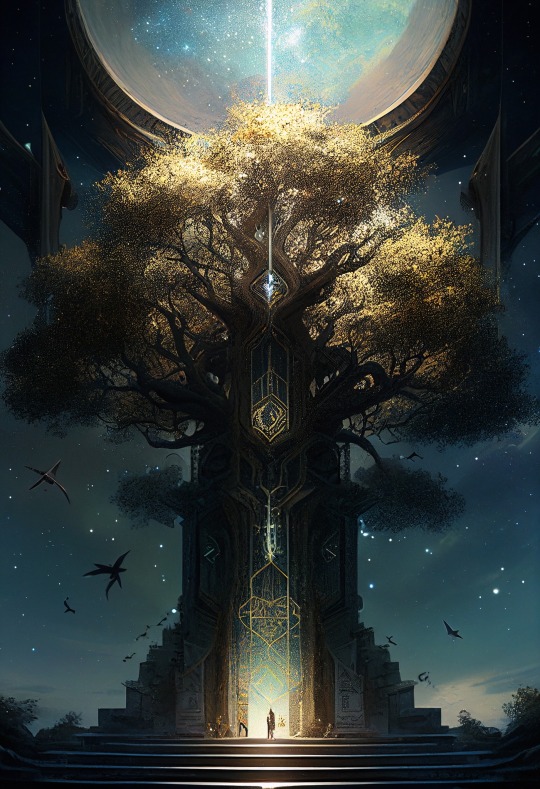
The Tree of Life, or Etz haChayim (עץ החיים) in Hebrew, is a term that is used to describe the central mystical symbol used in the Kabbalah of esoteric Judaism. The Jewish Kabbalah usually refers to the symbol as the 10 Sephirot (sephirot means 'spheres') however the term 'Tree of Life' is more universally known.
Etz Hayim "Tree of Life" Talon Abraxas
271 notes
·
View notes
Text
Since it was buried deep in a long esoteric fandom post, i kinda want to extract and expand on this comment as its own post
There is an ancient, global, historical and cultural meme that gets glossed over a lot: a ton of christian concepts of Satan, and of Hell, and satanic-ness, is based on antisemitic interpretations of jews, but also, and i mean this in the coolest possible way, as a Jew, much of it is based on Jewish imagery -- in particular, it is based on Jewish G-d.
there's the explicit, overwhelming, absolutely ubiquitous association with fire, to the point where it is the overwhelmingly major attribute of G-d, and any invocation of fire in the jewish tanakh hints at connotations of G-d. Blood dashing and blood marking, and flesh sacrifice by slaughtering and burning of offerings throughout the jewish Tanakh, especially in Exodus. The frightening imagery of fire and brimstone has entered basic western vocabulary so deeply that this imagery -- imagery that in the sources characterizes all of G-d's and the Jews' presence and religious behavior in Exodus and throughout the rest of the Tanakh -- is casually described as hellish and satanic. Volcanoes' lava fields are 'hellish', fires of natural gases producing pillars of flame and smoke are 'hellish'. rituals of fire and blood and burning and heavy costumery and ancient crumbling scrolls hidden in arks embossed and engraved with strange tongues are satanic. and the devil is given a characterization thinly echoing torah's depiction of jewish G-d: as a challenging and frightening and alluring figure who straddles fae-adjacent borders between tricksterish disruption and extreme legalism, who makes deals and bargains (covenants, even) with humans.
In christianity it's usually a distancing game -- a forcible identification of all these recognizable attributes of G-d and judaism with the non-god, christian figure of the devil; and simultaneously a forcible identification of jewish g-d with christian god (after all these attributes are stripped out), and of christian god with extremely different attributes, or at least opposition to the devil. But not always.
It's found in exactly as many words in foundational Gnostic theology that had a great amount of influence on the development of early christianity: it explicitly and actively (rather than the implicit coding above that mainstream christian imagery does) identifies Jewish G-d, as in the exact God of the Jews who is depicted in the Torah, as a false god, the archon and demiurge, who should not be, who is responsible for creating the material world as an illusory, fallen, sinful, inherently corrupted world as an intentional prison, rather than an incomplete starting point a la grapes-but-not-wine, and whom Jews evilly or deludedly follow to maintain the existence of this sinful world rather than escaping to the neoplatonic purity of true forms, where the True God, the New Testament god who includes Jesus Christ, rules instead.
It's pretty ~normal as a process goes! (it in fact totally mirrors some stuff in judaism, where we identified various things as treyf because they had connotations of a canaanite pagan thing LMAO. semiotics using ingroups and outgroups in this way is very very common, and normal! and our g-d, of course, with Its troubled, complex heart, in many ways is from folding the hearts of many different canaanite gods into one person). but in this case it's maybe unique in scope and subtlety, for contingent historical reasons: a case of the sign outstripping the signified to an incredible extent and also of trying to backdoor-in identification with the god in question (eg the designation of gnosticism as a heretical sect by christianity, because mainstream christians preferred to recontextualize/repurpose jewish g-d, rather than break from It and allow jewish g-d to be defined by/identified with jews, even if in the gnostics’ explicitly evil way).
it does also have a weird consequence more modernly, among ppl who backlash to christianity with eg [demonic imagery is cool] stuff and don't realize what it looks like to people who have a slightly larger camera aperture: just skipping over the entire existence of judaism in terms of why the hell-stuff exists or is a hell-thing in the first place (there are a few reasons, and this is the big one). like, it DOES feel bizarre when there's like, ppl trying to be edgy and subversive by embracing christian demonicness that [checks notes] is just aesthetics and attitudes that are just very traditional jewish imagery and ritual. yk it just feels a bit....'hm....do they....uh.....know...'. when the old satanists 'inverted' the jesus pentagrammaton with uh, just the sigil of baphomet, as if the hebrew lettering etc is originally christian. like….
as most peopel know, the association of judaism with satanism is both extremely a longstanding Thing in antisemitism, but also smth jews are Super dystonic and jumpy to disclaim for obvious reasons.
now ofc jews's flat statement that this association is just fake is like, 'true', in that while judaism certainly developed in the past 2 millennia with an awareness of christianity and in the same world as a variety of other cultural influences, judaism is obviously not about christianity. as in, it doesn't categorize its elements and framework of the world according to christian elements and frameworks. but 'it's fake' is not like...a complete answer i guess. (like, it implies hell aesthetics were totally independent and preexisting and judaism was only associated with it post-hoc); it's also kinda, giving up ground? in the going straight to 'hdu say we're freaks! we r normal!' rather than 'is that supposed to be an insult? being a freak is cool and also your instinct to categorize us this way is telling and interesting'
this isn't unique, similar reactions happen alot where there's a marginalized culture trying to avoid violence lol, but it's sort of. lame. why not lean into this attempted dunk. the material universe as a delicious as well as incomplete and perilous mass of bursting universeness, whose materiality is what brings about both fortune and misery, brought to material existence by jewish g-d who is scary and bizarre and fiery and has a great deal of weird opinions/ideas about a bunch of detailed specifics about this-worldly life and the this-worldly material of the universe, who makes deals with the particular people who engage with them -- who is a recognizable germinating seed of the surface of christian hell and satanic aesthetics and ideas, is metal and interesting!
and it's not like. idk. a set of frames that are incompatible with christianity either, afaict some traditions lean harder than others, but i'm jewish and obviously not exactly an expert in those aspects of christianity lol.
a friend of mine regarding their conversion to judaism said:
like g-d as a... person, for lack of better terms. g-d who is a bit of an unknown quantity? sort of devilish, smirking at you when They offer a deal and you are not aware of the legalese (or maybe you are! ) and it's just like. this is how g-d is. g-d is just being g-d, g-d is this rascal who is quite particular but also endlessly enamoured with what people will do...
i didnt (& still dont!) care for satan in the christian sense because ....i don't find a god who is unchangign and eternal and sort of... impersonal.... in any way interesting. & thus an anti-god who is.... there and personal but like just to "tempt" you or w/e is also boring in comparison.
but g-d who is playful, who is tempting and trying to seduce you and be seduced, who you can bargain w and get into a contract w which might seem "unfair" in some ways (fucking halakhah right wwww) and like bullshit legalese but it's like, you are agreeing to it! you are taking that on bc you find that worthwhile. like how someone sells t heir soul to the devil, because they think it's worthwhile; but ig in this case you're not rlly getting like, "be able to play the fiddle better than any mortal" type just a... you have the option and you want to take it! that is all far more compelling to me and far more godlike. bc it transforms g-d into an active participant
#j#i wrote this uh#just before october so#i sat on it instead of posting it for several months LMAO#long post
24 notes
·
View notes
Text
…there is a long tradition in the esoteric lineages of remaining opaque in the presence of those who ask questions from naïveté rather than a more informed interest in the answer. Zen masters are said to slam the door in your face three times before admitting you to the kendo. In some forms of Orthodox Judaism, prospective converts must be sternly turned away three times before a conversation is possible. (That fourth time must be the universal charm.) The crazy wisdom masters of Tibetan Buddhism are known for all sorts of pranks and mischief (and worse) in the presence of naïveté.
Susan Piver, The Buddhist Enneagram: Nine Paths to Warriorship
21 notes
·
View notes